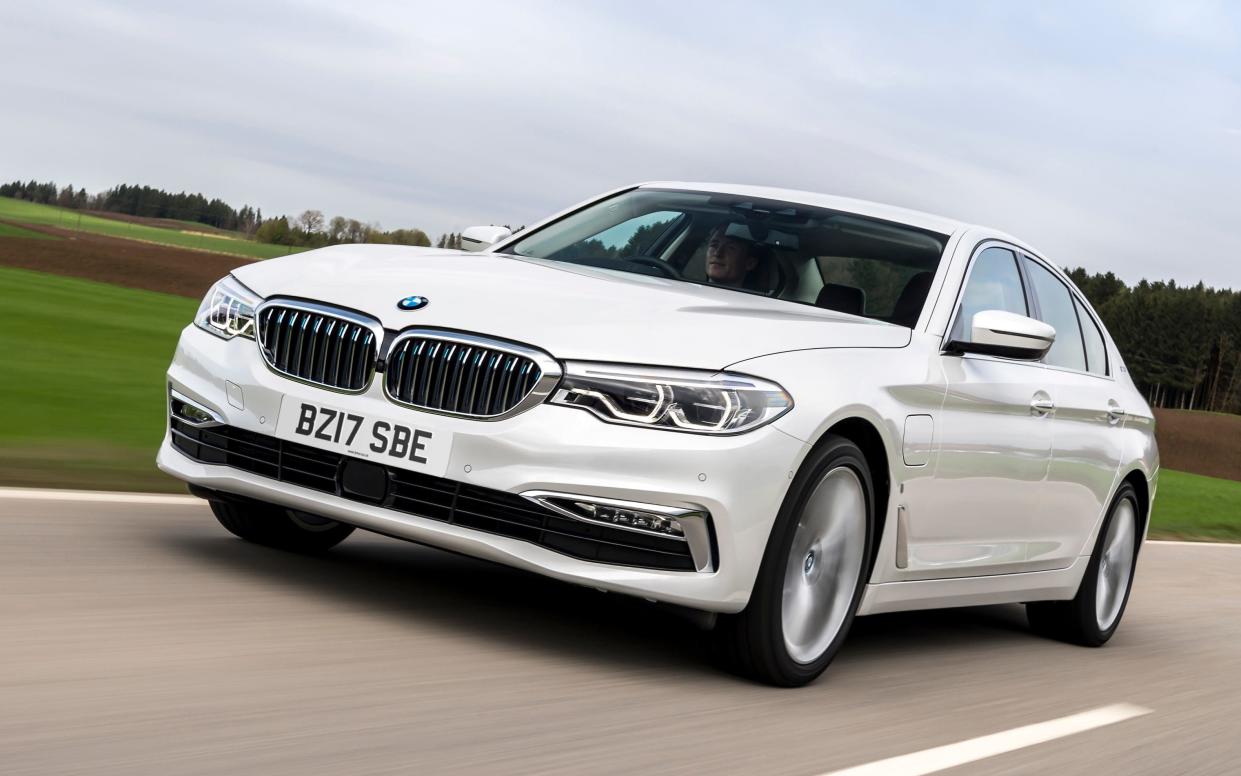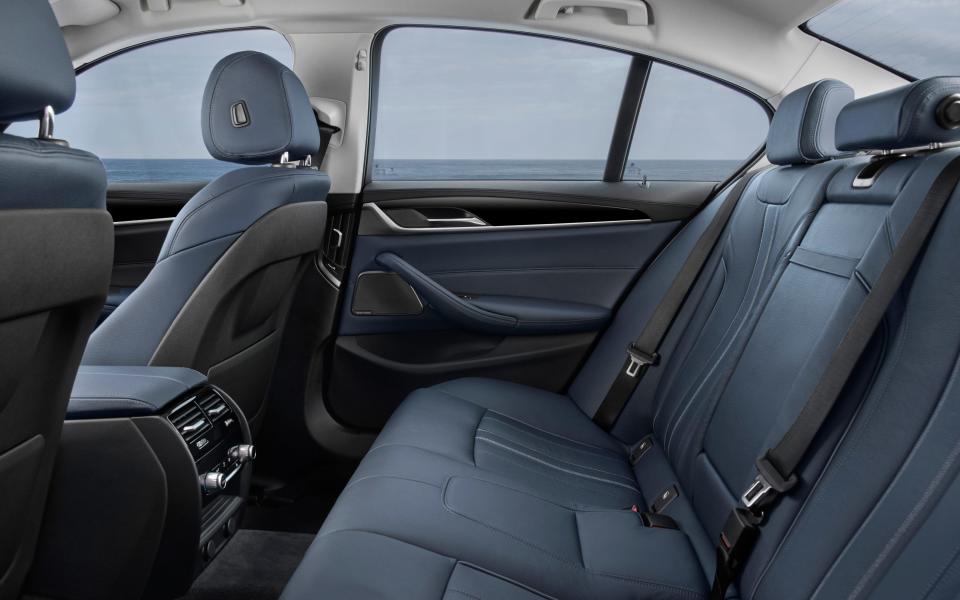2017 BMW 530e iPerformance driven – does this hybrid 5-series make sense?

Sales of BMW hybrid and electric cars doubled in the first quarter of 2017 to almost 20,000 units as the German brand sets its sights on selling 100,000 electrified vehicles in 2017.
Its i3 and i8 might steal the headlines, but electrified versions of mainstream models such as the X5 xDrive40e SUV and 225XE family car will play an increasingly important role in meeting that ambition. Joining them is the new BMW 530e iPerformance, the plug-in hybrid version of the company’s highly acclaimed new 5-series.
As is the way with plug-in hybrids, the final judgement will come in part down to the numbers, so let’s take a moment to digest what the greenest 5-series has to offer. On the flawed EU Combined cycle it returned 141.2mpg and emitted just 46g/km of CO2, suggesting serious eco credentials. Yet with your foot to the floor it can also accelerate from a standstill to 62mph in just 6.2 seconds and hit 146mph flat out, making it a petrolhead’s dream.

Of course, the way to achieve such dual purpose from a single car is to equip it with not one but two power sources, which in the case of the 5-series are a 2.0-litre turbocharged petrol engine and an electric motor powered by a 9.2kWh lithium-ion battery. It’s a similar setup to BMW’s plug-in hybrid 330e 3-series saloon, and sees the electric motor mounted within the eight-speed automatic gearbox, meaning the 530e remains rear-wheel drive, rather than all-wheel drive as with some of BMW’s other hybrids.
The battery is though big and heavy, resulting in the petrol tank shrinking (although you still get a range of about 400 miles) and the boot also losing some capacity. In fact, at 410 litres the latter is a full 120 litres down on a regular 5-series, and BMW is also unlikely to offer a Touring estate version of the 530e in the UK.
Passenger space is more impressive, and the interior itself a masterclass in contemporary luxury. True, the dual-screen infotainment setup of the Mercedes E-class might have the ultimate wow factor in this class, but it is BMW’s iDrive system that is easier to use.
Back to those numbers, and the 249bhp power output of the 530e puts it 10bhp behind the 530d diesel. Prices for the two are though identical - or at least they would be were it not for the fact the Government provides buyers of the £44,000 530e with a plug-in car grant of £2,500.
Those running the 530e as a company car will also enjoy a benefit-in-kind rating that makes it approximately £1,700 cheaper per year for a 40 per cent tax payer versus the company’s 520d SE Efficient Dynamics. For private customers the arguments are less clear cut, in part because the 520d costs thousands less to buy, but also because plug-in hybrids no longer attract large VED road tax savings, and that’s before you factor in that your 520d with a couple of options might just creep in below the £40,000 premium tax threshold, thereby saving you an addition £310 per year from the second to sixth years of ownership.

What’s more, if you fail to regularly plug the 530e in to charge you’re unlikely to see any better than the 45-50mpg you can get out of a 520d anyway. Charging, incidentally, takes 3 to 4 hours depending on the power source and will give a pure electric range of up to 31 miles. Or, if those charging cables seem like too much of a faff, BMW is also working on a wireless induction system for later this year or early next, although whether buyers will want to stomach the cost of having it fitted is yet to be seen.
For now though it seems as though the numbers paint a mixed picture for possible 530e ownership, which means it’s down to the way it drives to make up our minds. With the new 5-series being such a fine all-rounder the bar has been set very high indeed.
The good news is that BMW certainly hasn’t ruined the latest 5-series by turning it into a hybrid, for the 530e is still an accomplished car. On electric power it is supremely quiet, as well as being fast enough for most situations. In its default auto hybrid mode it’ll make it up to 50mph before the petrol engine cuts in, while in the max eDrive setting you can reach 87mph. Alternatively there’s a Battery Control mode which uses the petrol engine to charge the battery to a selected level and hold it there for later in your journey.
Smarter still is how the hybrid system works in conjunction with the satnav to plan where best to deploy battery power on a given journey for maximum efficiency. This is useful technology, seamlessly deployed.
On the whole, performance is good, with strong acceleration when petrol and electric combine, although it can take the gearbox a second or so to respond to sudden demands for full power. It is reassuring though just how rarely you notice there are only four pistons pumping away under the bonnet, and if the engine note isn’t particularly evocative nor is it ever grating.

What the 530e loses out on - at least in M Sport guise with 20-inch wheels as tested - is the ultimate ride comfort of other models in the 5-series range. The cause is likely a combination of those huge rims, the extra weight of the batteries and the stiffer suspension required to maintain body control (which is admittedly very good), but it does beg the question as to why you’d buy the least compliant version of a car renowned for its high levels of comfort.
If you are to opt for a 530i (and 15 per cent of 5-series buyers are expected to) I’d suggest looking at the £3,300 cheaper SE version rather than the M Sport, and certainly avoiding the box marked “20-inch alloys”. In doing so you’ll have an impressive machine that, if used correctly (and it is a big “if”), will return some even more impressive fuel economy figures.
However, given the 5-series is usually bought by those who cover a lot of miles, you might just find yourself unable to escape the conclusion that a petrol or diesel model remains the more compelling option.
THE FACTS
BMW 530e iPerformance
TESTED 1,998cc turbocharged four-cylinder petrol engine and electric motor, eight-speed automatic transmission, rear-wheel drive
PRICE/ON SALE From £41,485 (including plug-in car grant)/now
POWER/TORQUE 249bhp/310lb ft (total system output)
TOP SPEED 146mph
ACCELERATION 0-62mph in 5.8sec
FUEL ECONOMY 141.2mpg (EU Combined)
CO2 EMISSIONS 44g/km
VED £0 first year then £450 for following five years, then £130
VERDICT While the 530e is without doubt an accomplished plug-in hybrid and the numbers are sure to appeal to company car drivers, it isn’t quite as good to drive as other models in the 5-series range. A good car, then, but not a truly great one.
TELEGRAPH RATING Three out of five stars
For all the latest news, advice and reviews from Telegraph Cars, sign up to our weekly newsletter by entering your email here

 Yahoo News
Yahoo News 